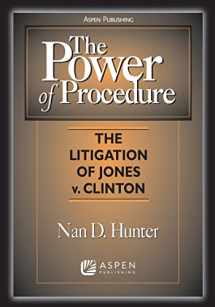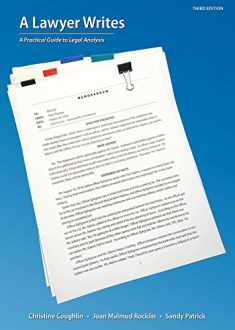
The Power of Procedure (Aspen Coursebook)
ISBN-13:
9780735528253
ISBN-10:
073552825X
Edition:
Annotated
Author:
Nan D. Hunter
Publication date:
2002
Publisher:
Aspen Publishing
Format:
Paperback
224 pages
Category:
Legal Education
,
Civil Procedure
,
Rules & Procedures
,
Litigation
FREE US shipping
Book details
ISBN-13:
9780735528253
ISBN-10:
073552825X
Edition:
Annotated
Author:
Nan D. Hunter
Publication date:
2002
Publisher:
Aspen Publishing
Format:
Paperback
224 pages
Category:
Legal Education
,
Civil Procedure
,
Rules & Procedures
,
Litigation
Summary
The Power of Procedure (Aspen Coursebook) (ISBN-13: 9780735528253 and ISBN-10: 073552825X), written by authors
Nan D. Hunter, was published by Aspen Publishing in 2002.
With an overall rating of 4.3 stars, it's a notable title among other
Legal Education
(Civil Procedure, Rules & Procedures, Litigation) books. You can easily purchase or rent The Power of Procedure (Aspen Coursebook) (Paperback, Used) from BooksRun,
along with many other new and used
Legal Education
books
and textbooks.
And, if you're looking to sell your copy, our current buyback offer is $0.48.
Description
How do you show your students the dynamic application of Civil Procedure in litigation? This new paperback reference supplies the perfect vehicle, using actual litigation documents from the Jones v. Clinton case to demonstrate The Power of Procedure. The author skillfully utilizes engrossing documents to illustrate key concepts:
For effective teaching and learning, the text offers:


We would LOVE it if you could help us and other readers by reviewing the book
Book review

Congratulations! We have received your book review.
{user}
{createdAt}
by {truncated_author}

![Civil Procedure: A Coursebook [Connected Casebook] (Aspen Casebook)](https://booksrun.com/image-loader/235/https:__m.media-amazon.com_images_I_41qovxDYXaL._SL500_.jpg)


